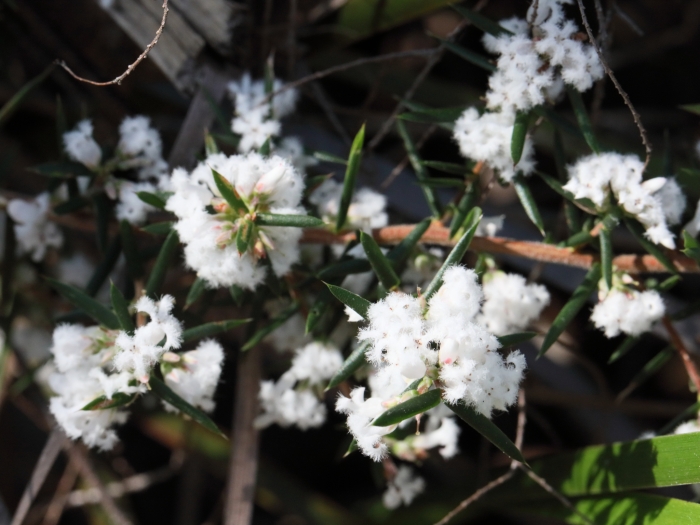Pink Beard-Heath
(Styphelia ericoides)
Pink Beard-Heath (Styphelia ericoides)
/
/

© tobyyy
CC BY-SA 4.0
Image By:
© tobyyy
Recorded By:
Copyright:
CC BY-SA 4.0
Copyright Notice:
Photo by: © tobyyy | License Type: CC BY-SA 4.0 | License URL: http://creativecommons.org/licenses/by-sa/4.0/ | Uploader: tobyyy | Publisher: iNaturalist |























Estimated Native Range
Summary
Styphelia ericoides, commonly known as Pink Beard-heath, is a slender evergreen shrub endemic to a variety of habitats including heathland, dry sclerophyll forests, and coastal woodlands in southeastern Australia, specifically southeast Queensland, eastern New South Wales, southern Victoria, South Australia, and Tasmania. It typically grows to a height of 1 to 6.7 feet (0.3 to 2 meters) and features small, oblong leaves. The plant produces white to pale pink tube-shaped flowers from July to October, which are attractive to nectar-feeding birds and insects.
Pink Beard-heath is appreciated for its delicate flowers and ability to thrive in poor, sandy soils, making it a suitable choice for rockeries, native gardens, and as a filler plant in mixed borders. It requires well-drained soil, tolerates drought once established, and prefers full sun to part shade. While it is fire-sensitive, it has adapted to regenerate effectively from seed after fire events. Gardeners should be aware that it may require protection from heavy frosts.CC BY-SA 4.0
Pink Beard-heath is appreciated for its delicate flowers and ability to thrive in poor, sandy soils, making it a suitable choice for rockeries, native gardens, and as a filler plant in mixed borders. It requires well-drained soil, tolerates drought once established, and prefers full sun to part shade. While it is fire-sensitive, it has adapted to regenerate effectively from seed after fire events. Gardeners should be aware that it may require protection from heavy frosts.CC BY-SA 4.0
Plant Description
- Plant Type: Shrub
- Height: 1.5-3 feet
- Width: 1.5-3 feet
- Growth Rate: Moderate
- Flower Color: White
- Flowering Season: Spring, Summer
- Leaf Retention: Evergreen
Growth Requirements
- Sun: Full Sun, Part Shade
- Water: Low
- Drainage: Medium, Fast
Common Uses
Bird Garden, Butterfly Garden, Drought Tolerant, Erosion Control, Low Maintenance, Rock Garden
Natural Habitat
Heathland, dry sclerophyll forests, and coastal woodlands in southeastern Australia
Other Names
Common Names: Yellow Styphelia
Scientific Names: , Styphelia ericoides, Epacris spuria, Leucopogon ericoides, Leucopogon obovatus, Leucopogon obovatus, Leucopogon trichocarpus, Styphelia spuria, Styphelia trichocarpa,
GBIF Accepted Name: